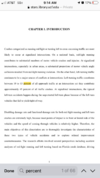I don’t think it’s final boss level at all. It’s an unprotected four lane highway where cars can likely go 50-55mph, a typical country road speed. The cameras can’t see far enough, the computer can’t process it fast enough, and the car can’t do the maneuver quick enough.
At 55mph, a vehicle reaches you in 3.25 seconds. But, the available time to maneuver is significantly less. You have to move forward to get above cars coming from the left, and you have to complete the turn and accelerate to not get smashed from cars coming behind you. Then, add detection time, calculation time, final decision making time, and changing conditions while in the maneuver and you get what we see. A human can clearly see better than the side cameras and we have two eyes, not a single lens.
I don’t think Tesla solves FSD in the current sensor suite. They’ll likely come out with new cameras and sensors and then deal with the likely lawsuits by offering free FSD on a new car or a transferable license.



